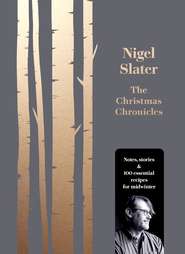
Полная версия:
The Christmas Chronicles: Notes, stories & 100 essential recipes for midwinter

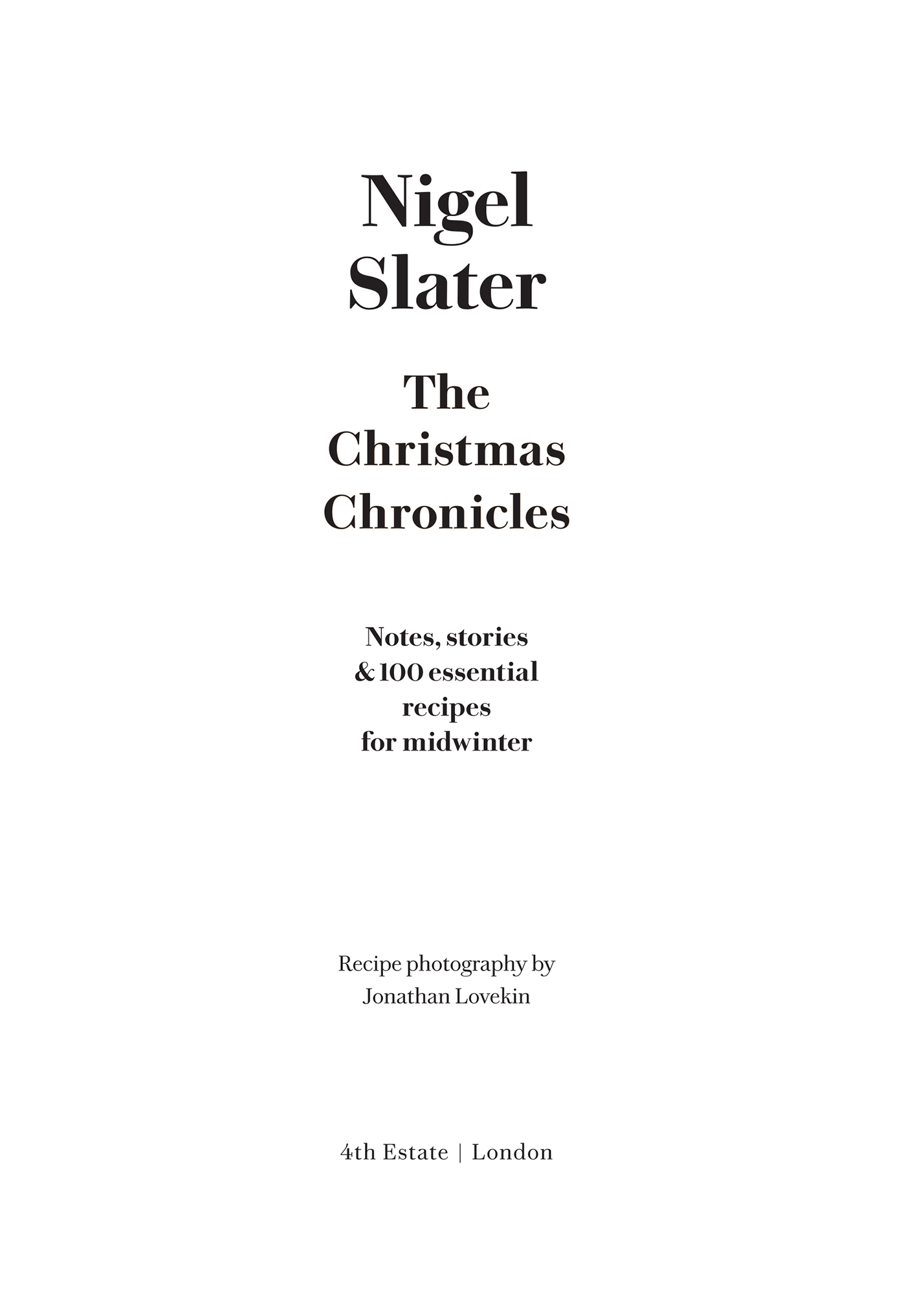
Copyright
4th Estate
An imprint of HarperCollinsPublishers 1 London Bridge Street London SE1 9GF www.4thEstate.co.uk
This eBook edition published by 4th Estate in 2017
Text copyright © Nigel Slater 2017
Location photographs © Nigel Slater 2017
Recipe photographs © Jonathan Lovekin 2017
Nigel Slater asserts the moral right to be identified as the author of this work.
A catalogue record for this book is available from the British Library.
All rights reserved under International and Pan-American Copyright Conventions. By payment of the required fees, you have been granted the non-exclusive, non-transferable right to access and read the text of this eBook on-screen. No part of this text may be reproduced, transmitted, downloaded, decompiled, reverse engineered, or stored in or introduced into any information storage and retrieval system, in any form or by any means, whether electronic or mechanical, now known or hereinafter invented, without the express written permission of HarperCollins Publishers.
Source ISBN: 9780008260194
Ebook Edition © October 2017 ISBN: 9780008260200
Version: 2017-11-03
For James
Who once told me ‘You can grow old, just make sure you never grow up.’
Contents
Cover
Title Page
Copyright
Dedication
Introduction
November
December
January
February
Index
Acknowledgements
Note about the type
About the Book
About the Author
Also by Nigel Slater
About the Publisher
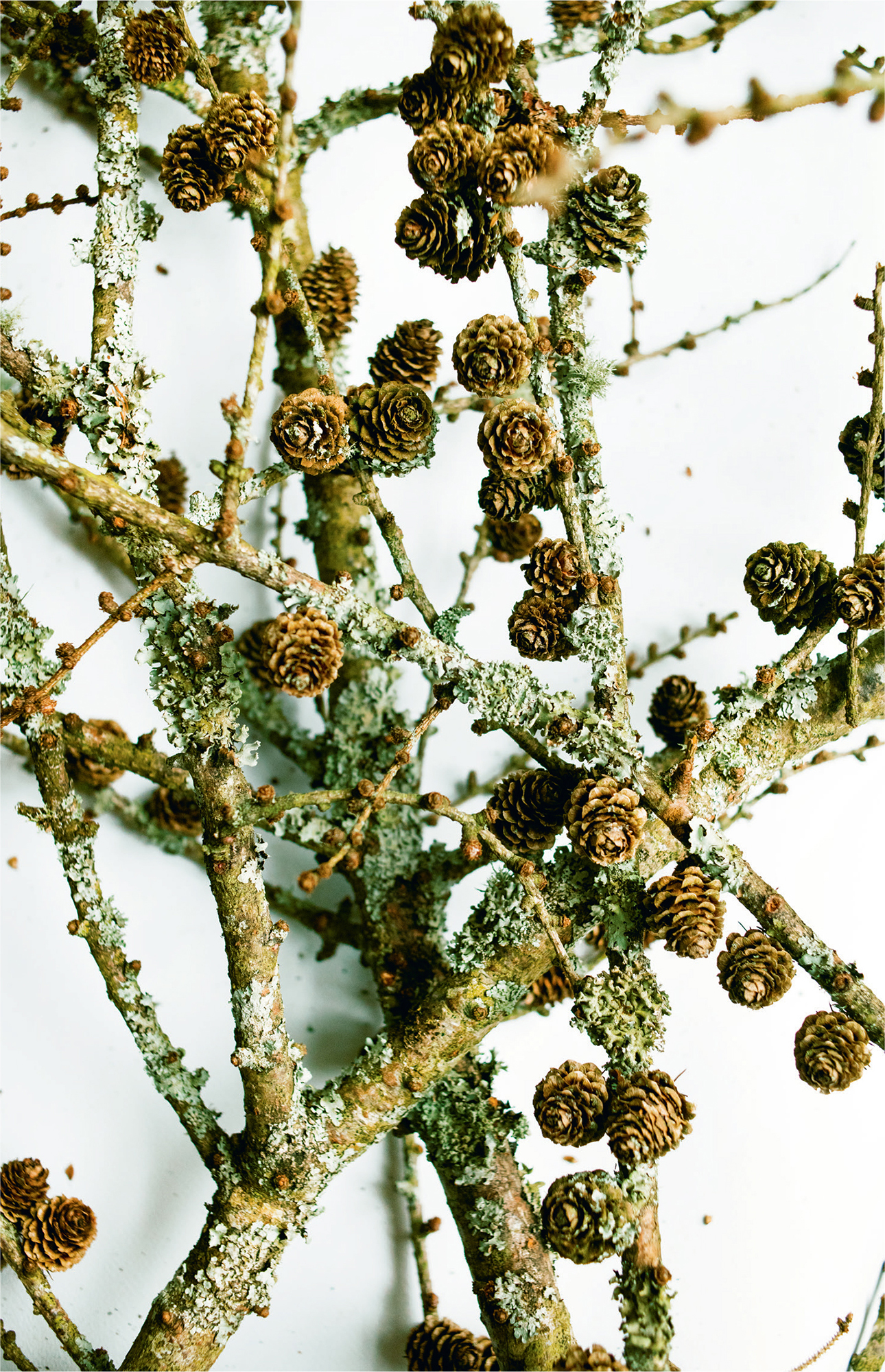
Introduction
The icy prickle across your face as you walk out into the freezing air. The piercing burn to your sinuses, like wasabi. Your eyes sparkle, your ears tingle. The rush of cold to your head is stimulating, vital, energising.
The arrival of the first snap of cold is invigorating, like jumping into an ice pool after the long sauna of summer. Winter feels like a renewal, at least it does to me. I long for that ice-bright light, skies of pale blue and soft grey light that is at once calm and gentle, fresh and crisp. Away from the stifling airlessness of summer, I once again have more energy. Winter has arrived. I can breathe again.
My childhood memories of summer are few and precious. Picking blackcurrants for pocket money. A vanilla ice cream, held between two wafers, eaten on the seafront with my mum, seagulls overhead. Sitting in a meadow, buttercups tickling my bare legs, eating ham sandwiches and drinking dandelion and burdock. Pleading with my parents to stop the car so I could get out and pick scarlet poppies, with petals like butterflies’ wings that wilted before I could get them home. These are virtually the only recollections I have of those early summers. It is the winters that stay in my memory, carved deep as a fjord, as long and clear as an icicle.
It is as if my entire childhood was lived out in the cold months, a decade spent togged up in duffel coats and mittens, wellingtons and woolly hats. To this day, I am never happier than when there is frost on the roof and a fire in the hearth. I have always preferred snow underfoot to sand between my toes.
I love the crackle of winter. The snap of dry twigs underfoot, boots crunching on frozen grass, a fire spitting in the hearth, ice thawing on a pond, the sound of unwrapping a Christmas present from its paper. The innate crispness of the season appeals to me, like newly fallen snow, frosted hedges, the first fresh page of a new diary. Yes, there is softness in the cold months, too, the voluminous jumpers and woolly hats, the steam rising from soup served in a deep bowl, the light from a single candle and the much-loved scarf that would feel like a burden at any other time of year.
We all know winter. The mysterious whiff of jasmine or narcissus caught in the cold air; the sadness of spent, blackened fireworks the morning after Bonfire Night; a row of pumpkins on a frosted allotment spied from a train window; the magical alchemy of frost and smoke. Winter is the smell of freshly cut ivy or yew and the childish excitement of finding that first, crisp layer of fine ice on a puddle. It is a freckling of snow on cobbled pavements and the golden light from a window on a dark evening that glows like a Russian icon on a museum wall. But for each midwinter sunset, there is another side to this season. Like the one of 1962–3, when farmers, unable to negotiate deep snowdrifts, wept as their animals froze to death in the fields; the snap of frail bones as an elderly neighbour slips on the ice; the grim catalogue of deaths of the homeless from hypothermia. Winter is as deadly as she is beautiful.
A walk through the snow
It started with berries. Holly, rowan, rosehips. A project to record the plants, edible and poisonous, that we spotted on our walk to school. Two miles, in my case, of hedgerows to inspect daily. Hardly a project for me; I knew those hedgerows intimately, each tree and ditch, every lichen-covered gate. I knew which had wild sweet peas – Lathyrus odoratus – or primroses hidden by twigs and where to find a bullfinch’s nest. When you walk the same route every day on your own, you get to know these things. A tree you must duck to avoid a soaking if it has rained during the night; the progress of a slowly decomposing tree stump among the grass; a bush that delights with a froth of white blossom in spring that by autumn is a mass of purple-black berries. You get to know the site of the sweetest blackberries and the exact location of the wild violets, white and piercing purple, that twinkle like stars in dark holloways.
Even then I knew that hedgerows were sacred, the homes of birds’ nests and voles, hedgehogs and haws. I knew that the long, slim rosehips came from the single wild roses that are to this day one of my favourite flowers, along with the hawthorn. I knew too that my father’s name for hawthorn was ‘bread and cheese’, an ancient reference to the usefulness of its leaves and berries in winter. I also understood that the scarlet berries of yew and holly were never, ever, for consumption.
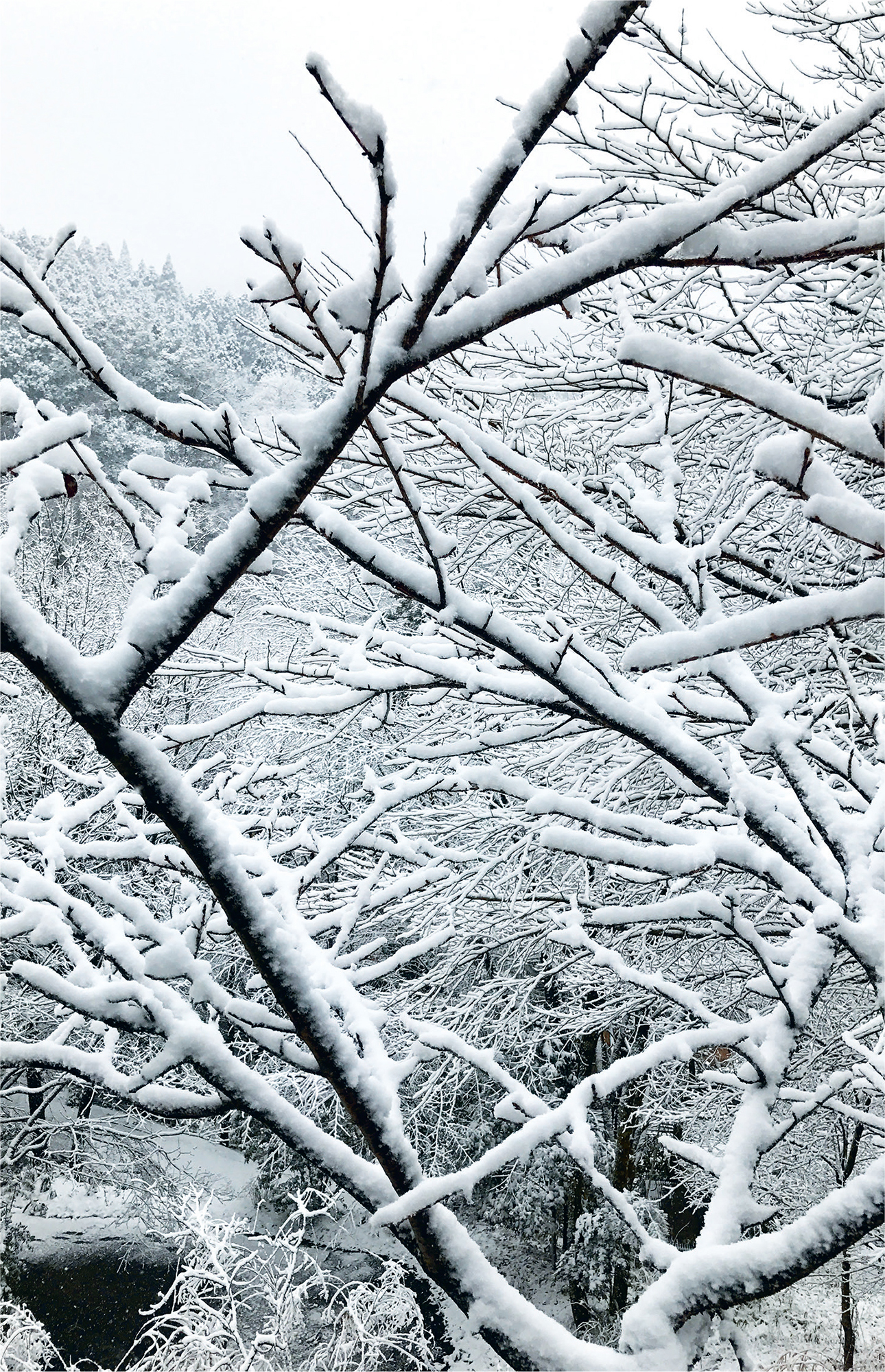
It was the berries left behind in the winter that held a special fascination for me. The darkening rosehips and hawthorn berries seen against a tapestry of frosty leaves; the solemn beauty of ivy and hypericum berries against a grey wall; a rosehip trapped in ice. Walking was part of my country childhood. A solitary one, but by no means lonely. Not that there was any choice. My father drove back to the Black Country during the week. We had just four buses, two on a Wednesday – one there, one back – and two on Saturday. A bike, you say? Not up the steep hills that surrounded Knightwick, with a gym bag and a leather satchel full of books. There were always books. We lived on the border of two counties. Home and school were in Worcestershire, the nearest shops in Herefordshire. The walks were wretched in summer, sweaty and hateful, full of stinging nettles and sunburn, but in autumn and winter each day was an adventure. I rarely got home before darkness fell. There was a moment, a patch of barely half an hour, when the sun would burn fiercely in the winter sky, just before it slid away, that I regarded as unmissable. Something I had to be outside for.
It was the walk to school that started everything. A life lived with the rhythm of the seasons. Not purely the food (miles from a supermarket or a greengrocer, we ate more seasonally than most), but the outdoors too, the landscape, the garden and the market. The sounds and smells that mark one season as different from another.
By the way, I kept that school project, neatly written in fountain pen, its berry-studded exercise books covered in dried leaves and curls of ‘old man’s beard’, for almost twenty years. Like pretty much everything I owned, it was destroyed in a house fire shortly after I moved to London.
Getting to grips with the season
Winter is caused by the movement of the Earth, the dark winter months appearing when the Earth’s axis is at its furthest point from the Sun. For all its bare twigs and pale, watery sunshine, winter is very much alive. Underneath the fallen leaves things are happening at a rate of knots; new life burgeons. Bulbs are sprouting, buds are bursting through grey bark, new shoots push their way to the surface. Many plants require vernalisation, a prolonged patch of low temperatures, in order to grow. Tulips, freesias, crocus and snowdrops, for instance. (I sometimes feel I do, too.) A secret world quietly doing what it does each year. A study in renewal, rebirth, new life.
Winter officially starts in Britain on December 21, the winter solstice, which is the shortest day. I feel this is slightly odd. You would expect the shortest day to be in the middle of winter, not the start, but it gets more complicated when you learn that the date varies from country to country. Sweden and Ireland, for instance, consider the start of winter as November 1, All Hallows’ Day. Agriculturally, it is Martinmas, November 11, that is considered to be the beginning. Some cultures also measure winter by temperature rather than by the calendar. Others ecologically or astrologically. In the northern hemisphere we generally consider winter to mean the months of December, January and February. Just to throw a further wooden spoon into the works, this book includes much of November.
The winter light. Stars and shadows
The winter sky has a clarity and gentleness that I find more pleasing than the harsh, screaming colours of summer. Softer tones, those clean, arctic blues, the whisper-soft greys and pin-sharp paper whites, are the skies I want to live under.
The night sky is clearer in cold weather too, the stars infinitely more visible. During the months of December, January and February we are no longer facing directly into the heart of the Milky Way, whose brightness has the effect of making our view of the stars hazy and blurred. In winter, with the planet facing the galaxy at a different angle, we see fewer stars, which is why they seem clearer on a cold frosty night. A clear case of less is more. Standing in the garden, even in London, it is easier to read the sky on a frosty night.
Shadows are more interesting in winter too. More fuel for the imagination. As the Earth tilts away from the sun, the shadows become longer. This is why, perhaps, the walk home is more scary on a winter’s night, because generally, shadows are seen as ghostly, eerie, even sinister. That said, it is true that most horror films and ghost stories are set on winter nights (if there is a summer ghost story, it has escaped my attention), where long shadows lend a suitably mysterious, spine-tingling atmosphere. I see them differently, thinking of shadows mostly as benign and fascinating. I often move lamps, furniture and plants in order to get a clearer, longer, more intriguing shadow.
The landscape
The stillness of winter. Snow on a twig. A berry imprisoned in ice. The quietness of a frozen lake. The bareness of the winter landscape allows us to get a better view of the world we inhabit. No long grass and canopy of green leaves to confuse the eye. No fluff of blossom to deceive us (their blossom gone, cherry trees surely get the prize for the most boring trees on the planet), just the clean lines of a winter landscape. The architecture is clear and crisp. The shape of a tree, the path of a river, the outline of a barn, as clear as if they were drawn on a map.
I was brought up with the mother of all ‘views’, which as an eleven-year-old I somewhat took for granted. From our back door, an undulating landscape of meadows, woodlands, rivers, against a backdrop of the Cotswolds and the Malvern Hills. Snowfall would stay untouched for days, sullied only by the footprints of birds, rabbits, squirrels and foxes. (As a child I imagined wolves and bears too.) Walking in the plantation of Christmas trees that backed on to our long, thin garden was like a trip to see Mr Tumnus. No lamplight, but we had the moon to illuminate the frost-like glitter on a Christmas card. The joy of the little forest of fir trees in the dell was that they stayed cool in the hottest of summers too. A place for a child to hide and play.
The move to the city has brought an altogether different winter into my life. Shorter (city snow is gone in a heartbeat); frosted pavements trashed by pedestrians and the warmth from buildings; snow in London is as rare as hens’ teeth. I have lived in the city for thirty years now and have seen all too few proper winters. By proper, I mean those winters with snow deep enough to shovel. The bare trees, however, remain majestic.
I’m not sure you really know a tree until you have seen it without its leaves. Naked, so to speak. They are often at their most peaceful and romantic in winter, like watching a loved one asleep.
Without the diversion of leaves, deciduous trees take on a sculptural quality; we get the opportunity to see their bark more clearly, the dance and flow of their branches, their character and form. Large trees are bare for only four months before new leaf buds emerge, first as freckles, then as tiny, opening leaves. This is when I take them into the house; as large twigs break off the horse chestnuts in the street, I gather them up and stuff them, however large, into one of two capacious vases. The branches I value most are those that have a good horizontal, fluid form, large enough to leave a shadow across the table. As the season moves into spring, their leaves will often open, slightly ahead of those out in the cold. A gift.
Being out in the cold
Those who work outdoors probably have a different view of the winter landscape from someone like me, who simply plays in it. Fishermen, shepherds, road sweepers, farm workers, professional gardeners and those whose working life is spent mostly in the open air may have an altogether less rosy take on the season. Fair enough. Working in the fields, for instance, your fingers can soon become numb, your face raw.
Being outside in the cold is invigorating but we do need to keep moving. The body doesn’t like being cold and still, which in extreme cases can result in hypothermia. It wants to maintain a steady temperature. We shiver simply because the brain is sending a message to the nerves all over our body to move quickly to generate heat. We should listen to it.
I am rarely happier than when working outside. Digging, sweeping, walking, all do it for me. I find manual work in the cold as energising and life-affirming as much as I find it (deliciously) exhausting. Short trips around the garden punctuate my day. I walk rather than use public transport to go shopping. Each morning, I will usually saunter around the garden, coffee in hand, rain or shine, frost or snow. I live in hope of that last one.
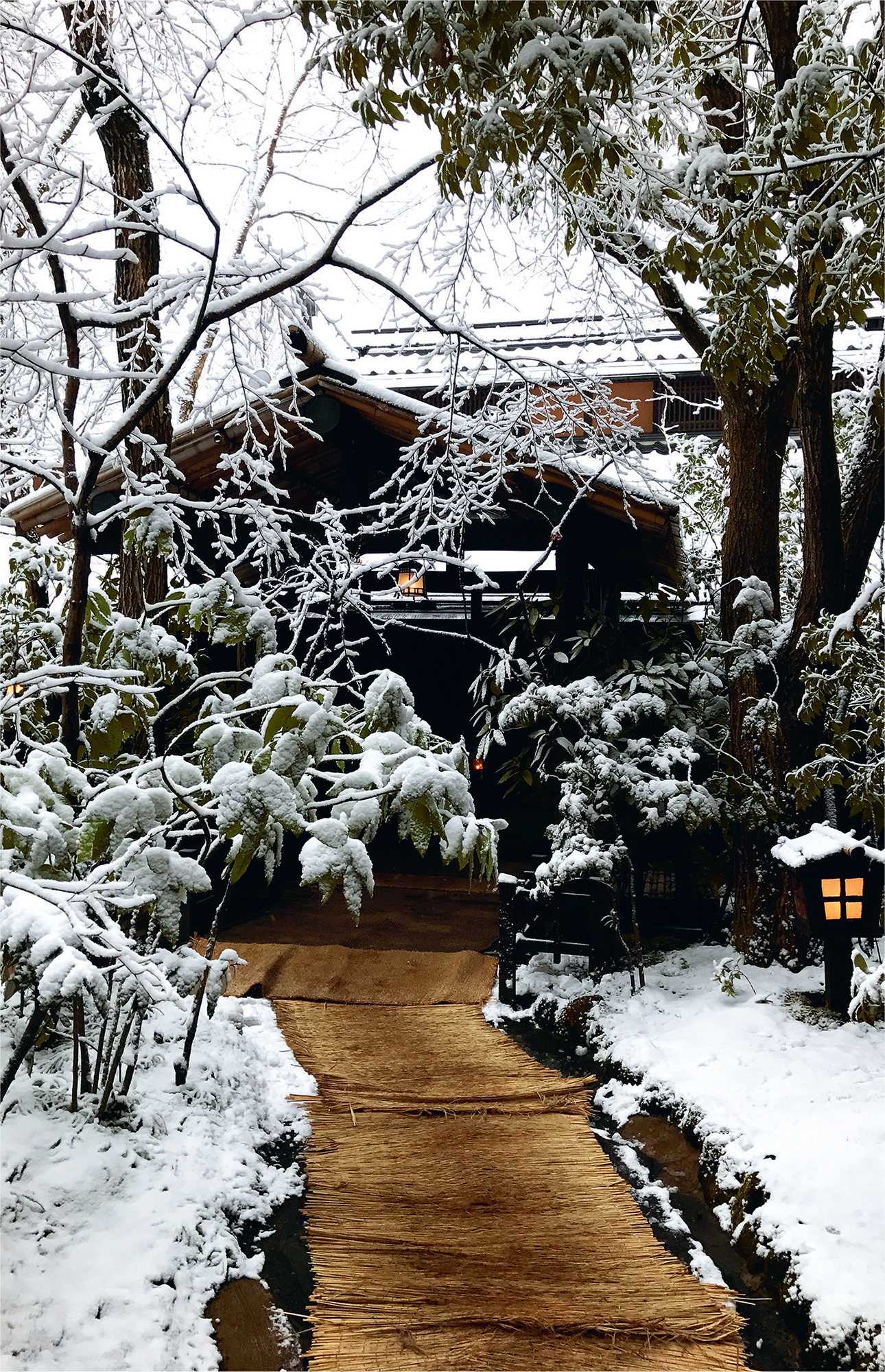
Coming in from the cold
It is just as good to come in. You stamp to shake the snow from your boots. The flakes of snow on your coat melt instantly. Your glasses steam up. You close the door and thank God you remembered to put the hall light on a timer.
You hang up your coat, tug off your boots and light the fire. You will probably put the kettle on or pour yourself a drink. Not so much as a way to get warm, more to welcome yourself home. Home means more to us in cold weather. Making ourselves comfortable is a duty. Making friends and family comfortable is an art.
‘Come in.’ Two short words, heavy with meaning. Step out of the big, bad, wet world and into my home. You’ll be safe here, toasty and well fed. ‘Come in.’ They are two of the loveliest words to say and to hear.
Having suggested someone might like to enter, then it is up to us to make them feel welcome. The words alone aren’t enough. And that is where the art comes in. There is almost nothing I enjoy more than welcoming visitors into my home. (Full disclosure, I quite like it when they go too.) But in between ‘in’ and ‘out’ I want them to feel wanted, comfortable (cosy even) and happy. Yes, warm, even in my rather chilly house, but also fed, watered and generally made to feel that all is well with the world. And yes, I know the world is a shit-storm at the moment, but we all need a safe harbour.
A welcome will invariably involve food, and never more so than at this time of year. No, I don’t have a tray of warm mince pies waiting. I don’t really live that sort of life, but I do like to have a cake of some sort in the house. Gingerbread in the biscuit tin (Lebkuchen if it’s remotely near Christmas), or a fruit cake. I am one of those people who, even in the twenty-first century, still makes fruit cake. Guests only get something savoury if they arrive in the evening, when I’m eating anyway. This house is always in a state of flux, being an office, photography studio and workspace all in one. But it is first and foremost a home, and I have always been a bit of home-maker. (The only thing I ever made in woodwork lessons at school was a coffee table, because I hoped it would make my unhappy adolescent home more hospitable.)
Our lives cannot always be about other people, love them as we do. We need some time for ourselves. I am never, ever without a book, but I do read differently in the winter. My feet curled underneath me, a blanket over my legs. I will always put another layer of clothes on rather than turn the heating up. I dislike, intensely, an overheated room.
But I am getting ahead of myself. It is the months prior to the arrival of the winter solstice – on December 21 – that I look forward to as much as anything. That first nudge that the summer is finally exhausted and we are slowly sliding into the golden days of another autumn. The slide is often protracted, but last year I distinctly remember the moment. We had eaten lunch in the garden, the last in a long, good summer of eating outside; the dahlias were collapsing into the flower beds in a tangle of burgundy and brown; the leaves on the medlar tree had turned as yellow as a ripe quince; dinner had been, at the last moment, bolstered by a dish of roast potatoes. Suddenly, from nowhere, the smell of drifting woodsmoke, and yet not a garden fire in sight, followed in a heartbeat by the urgent need for a jumper, another glass of wine. The season had, in the space of an afternoon, turned.
You either ‘get’ the cheer of winter, or you don’t. Some are rarely happy in fresh air. They only want to eat outside when the air is heavy and hot. But the mood is changing. We are, at last, seeing cafés hanging blankets and woollen throws over their outdoor seats for us to wrap ourselves in, as they do in Scandinavia. (Sadly, too many are often accompanied by the dreaded outdoor heaters.) I have happy memories of flasks of hot drinks on cold walks, of winter picnics of sugar-encrusted cardamom buns and hot coffee. And yet we have a long way to go before we see the cold the way some of our neighbours do.
The negative vocabulary of winter is well used. ‘It’s so cold’ is almost always said in a negative sense. ‘Yes,’ I usually say, ‘invigorating, isn’t it?’ A sentiment often met with a look of bafflement. We talk about ‘fighting the cold’, ‘battling the elements’, and ‘cold comfort’. The dead are ‘cold’ and we give people the ‘cold shoulder’. You can argue that statistically more people take their own life in cold countries. Yet those same countries, with their long winters and fewest hours of daylight, continually come out top in quality of life surveys. Go figure.
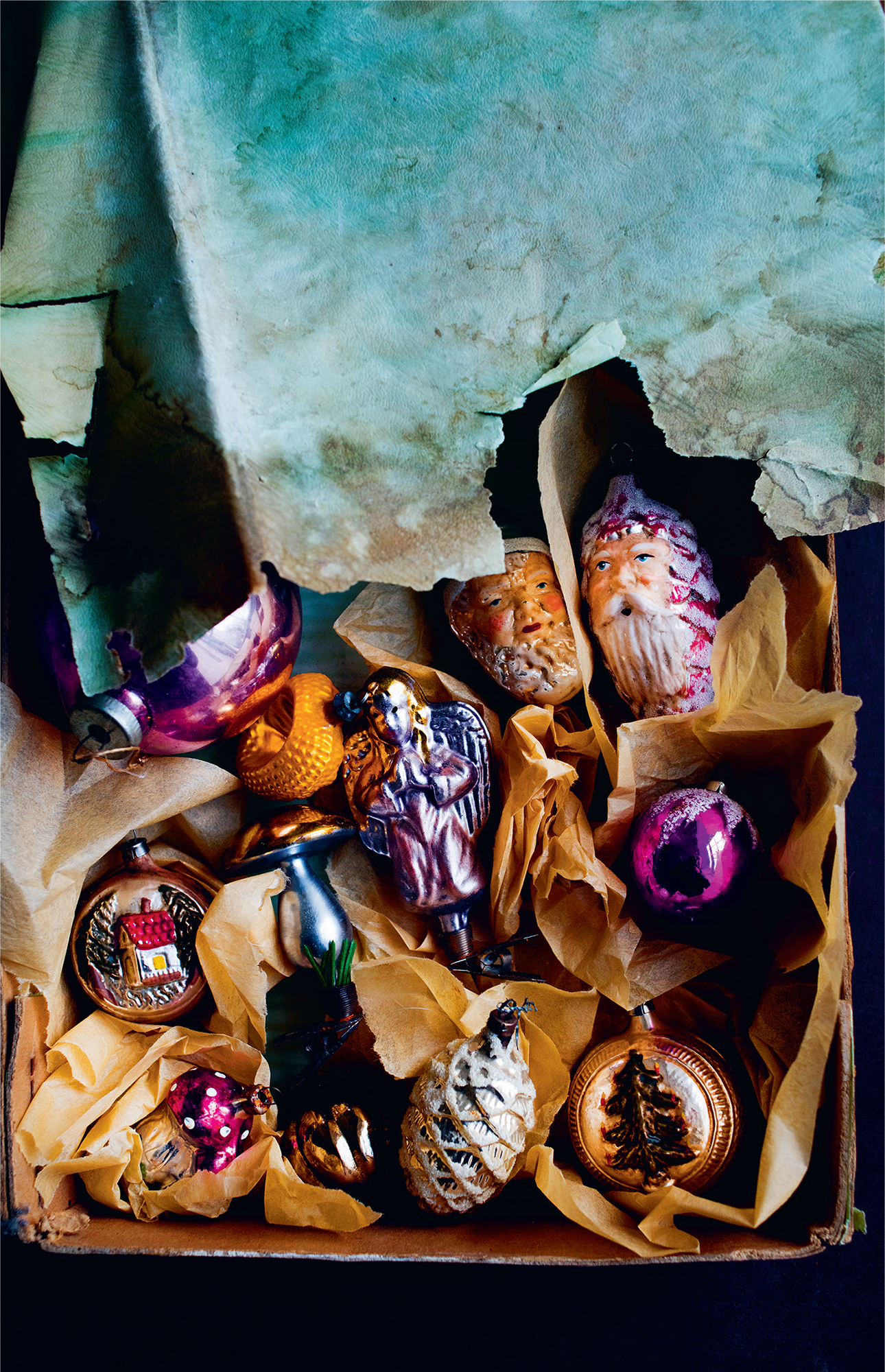
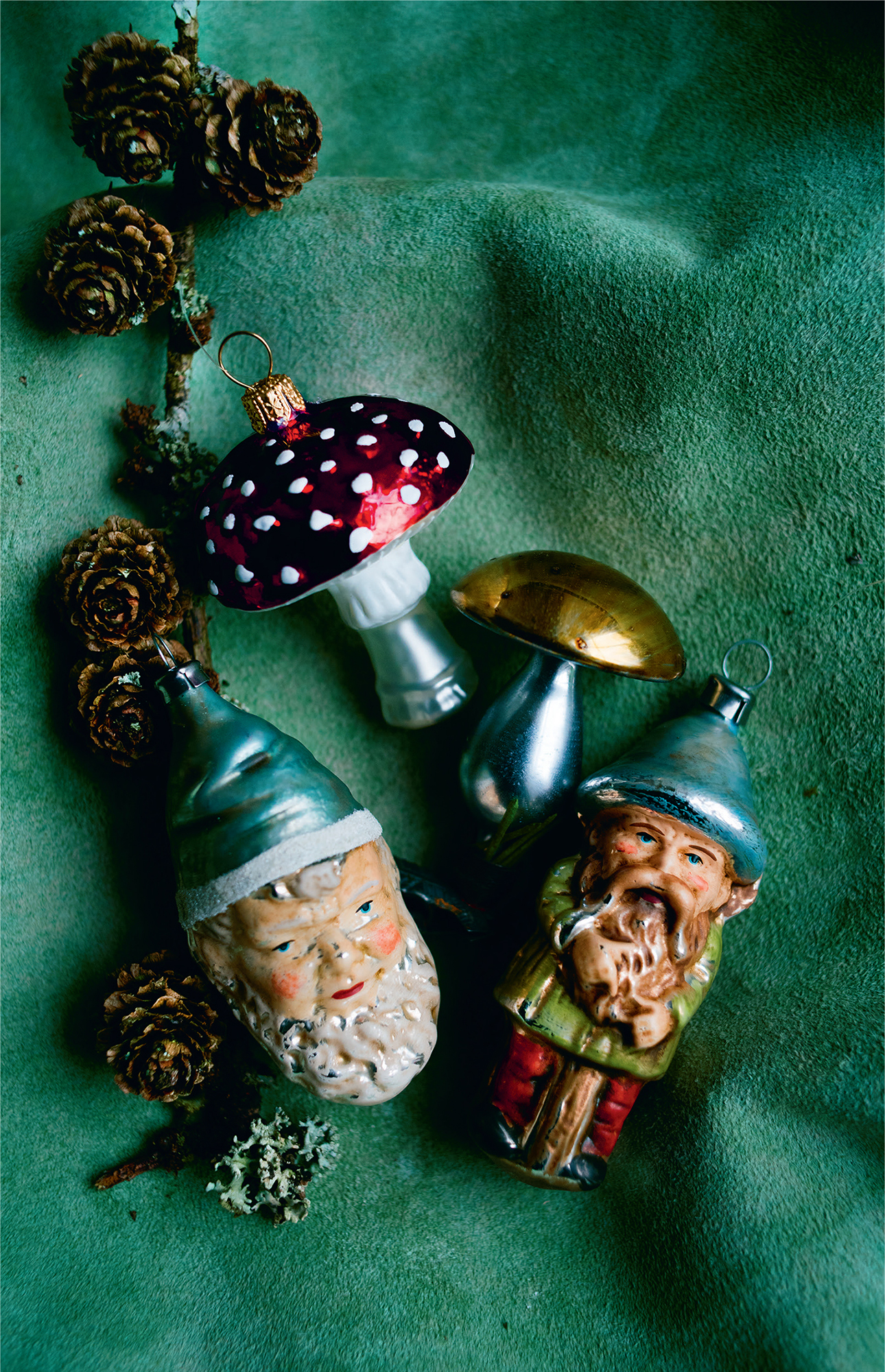
I pick a newspaper article about winter, totally at random, from the internet. Within the first three paragraphs the author trots out ‘bitter, plummeting, battered, dire, freezing, awful, discontent’, and then the ultimate – ‘Snowmageddon’. Finally, with the vocabulary of negativity exhausted, we get ‘Click to see our countdown of Britain’s Worst Winters.’ Not a single word in praise of an entire season of the year. Which is, in an average lifespan, over twenty years of our life. In my book, that is far too long not to enjoy ourselves.
Eating winter – The food of fairy tales
Gingerbread biscuits with icing like melting snow; steaming glasses of ‘glow-wine’; savoury puddings of bread and cheese and a goose with golden skin and a puddle of apple sauce. There are stews of game birds with twigs of thyme and rosemary; fish soups the colour of rust and baked apples frothing at the brim. Winter is the time for marzipan-filled stollen, thick with powdered sugar, pork chops as thick as a plank, and rings of Cumberland sausage sweet with dates and bacon.
The flavours of winter come at us like paper-wrapped presents in a Christmas stocking. Ginger, aniseed, cardamom, juniper and cloves. The caramel notes of maple syrup, treacle, butterscotch and the damp muscovado sugars. Fruits dried on the vine, and preserved in sugar. Ingredients too that hold the essence of the cold months: red cabbage, russet apples, walnuts, smoked garlic, chestnuts, parsnips and cranberries. Winter cooking is clouds of mashed potato flecked with dark green cabbage, roasted onions glistening like brass bedknobs and parsnips that crisp and stick molasses-like to the roasting tin. The food of the cold months is fatty cuts of meat, the flanks, shins and cheeks that we can leave to braise unhindered in a slow oven, with onions and thyme, wine and woody herbs, plodding silently towards tenderness. Meat you could cut with a spoon. Winter cooking is ham with a quince paste crust; game birds with redcurrant jelly; treacle sponge and Lebkuchen, mince pies and marmalade tarts.
Winter food is about both celebration and survival. It is about feasting – roast turkey, plum pudding and fruit cake; frugality – bean soups and mugs of miso broth; it is the food of hope – lentil soup for good luck on New Year’s day and the food of love – the mug of hot, cardamom-spiced chocolate you make for a loved one on a freezing day.
There is a gleeful abundance to late autumn and winter shopping, and a feeling of urgency to gather up things while we can. The last of the late-fruiting raspberries and damsons well on their way to jam; the late white peaches and crisp-as-ice local pippins and russets; walnuts in their shells and green figs with their soft, powdery scent. Late on an autumn evening, as I turn the corner to do my vegetable shopping, the heavy, sweet ripeness of the season hangs in the air, the glowing melons and late plums, the pumpkins and the last of the runner beans. Tomatoes, green and orange, red and gold. This is as good as food shopping gets.
As the season slides into winter – you can feel the heavy, sweet air of autumn turning crisp and clean with each passing dawn – there is the return of chestnuts and sweet potatoes, almonds in their shells, cream-fleshed parsnips, fat leeks and muscat grapes with their scent of sugary wine and honey. There are squashes shaped like acorns and others that resemble turbans to bake and stuff and beat into piles of fluffy mash; pomegranates – I love to see one or two cut in half on the display so we know whether we are buying jewels or pith – and proper big-as-your-hat apples for baking.
The game birds are lined up at the butchers, their featherless breasts kept warm by fatty bacon and a bay leaf. Partridges, pheasants and quail to roast, pigeons to bring to tenderness slowly with red wine and onions, and quails to split, skewer and grill till their skin blackens and their bones crunch. As the winter wears on, we see the first of the turkeys dressed for the feast, fat ducks and hams ready to boil, bake and slice.



